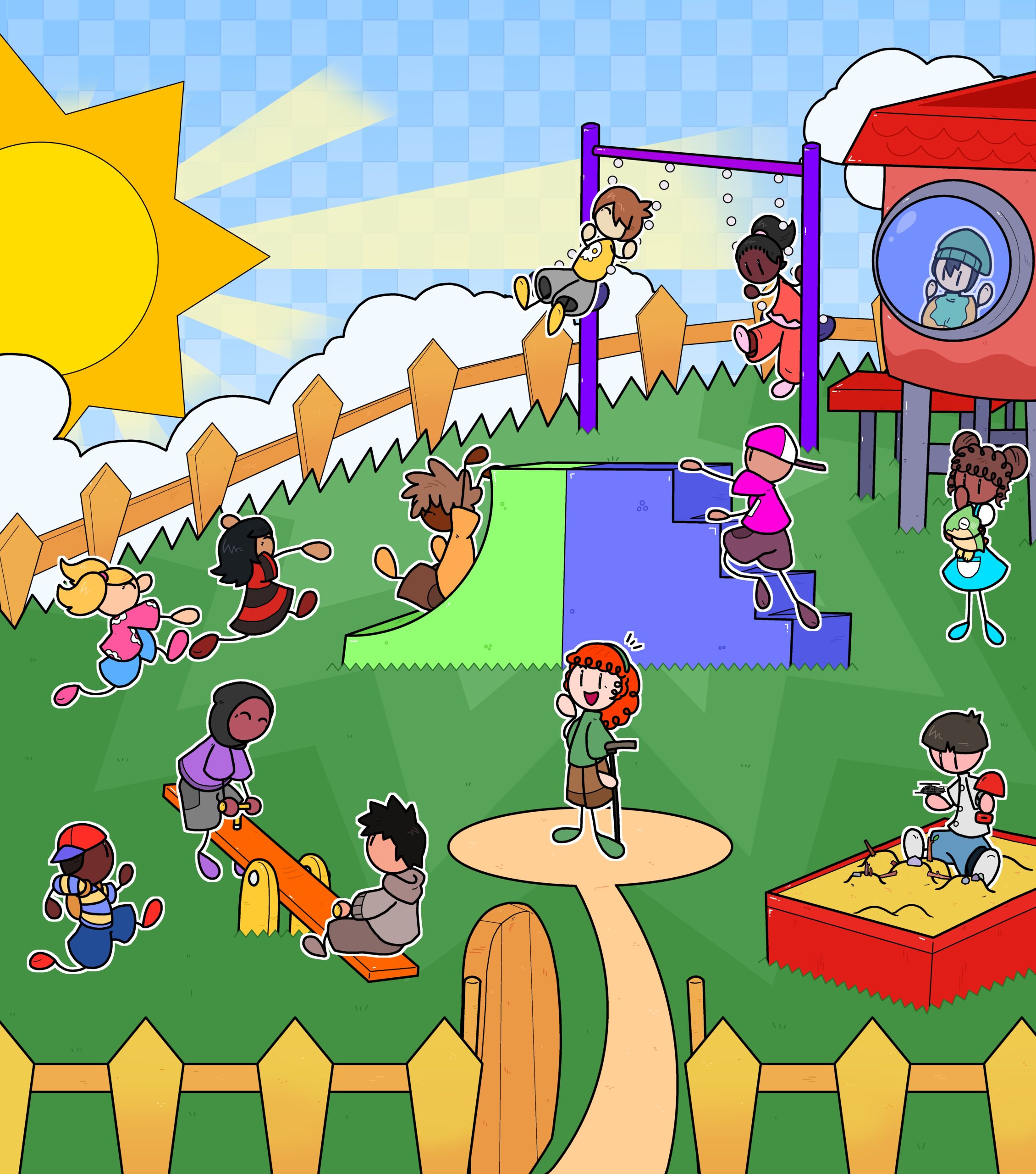What is literacy, anyway?
Is it just reading and writing? Or is it the ability to navigate texts, memes, TikToks, rulebooks, and Reddit threads? Is it knowing how to write an academic essay—or how to design a board game and explain it to strangers at a convention?
In this chapter, we wrestle with the impossible task of capturing everything language and literacy can mean—especially when games get involved. Here’s how that conversation began…
Jonathan: James!
James: What’s up?
Jonathan: We should be terrified of writing this chapter.
James: Why? We’re experienced language teachers. We’re also crazy literate in all kinds of stuff—games, the internet, research literature, music, memes, technology, social media…
Jonathan: 😨 Exactly! We’ve taught grammar and vocabulary, speaking, listening, academic writing, rule book writing, formal tests, game design, ad analysis, and even slang from Reddit.
James: Right. So that just means we have a lot to offer people who are into language and literacy teaching through games, doesn’t it?
Jonathan: 😨 Sure, but how do we communicate everything there is to know about language and literacy related to games and play… in just one chapter? How can we possibly give readers the full scope of what language and literacy entails? It’s just way too much.
I mean… take something as simple as the game “20 Questions.” You know it, right?
James: Sure.
Jonathan: One language teacher might:
Preteach some grammar and vocabulary for the game (like “Is it…?”, “bigger than…”, “alive”, “vehicle”, “can you…?”), then play the game with students to practice that target language. Done.
James: Sounds solid. Nice example of Ludic Language Pedagogy. What’s the issue?
Jonathan: Well, another teacher, in a different context with different students, might take a completely different route:
They play the game. Then they reflect with students on why it’s fun—how using language to uncover a secret answer works.
They explore the history of parlor games, then brainstorm how to combine “20 Questions” with other genres their students already love. Maybe they mash it up with “Werewolf” so some students know the answer and try to trick others with misleading questions.
From there, they design, playtest, iterate, and eventually create a polished print-and-play game. They upload it to BoardGameGeek, make a “how to play” video for YouTube, and even attend a local board game event to showcase it.
They start a subreddit for the game to share updates and stories. The students are literally moving from words in the game to words in the world.
Along the way, they develop not just language skills, but media literacy, cultural literacy, game literacy, design literacy… who knows what else!
James: That’s awesome. Totally LLP, and totally possible—if the teacher has the space to teach that way.
Jonathan: Right? But this is the problem: how do we cover the full range—from “here’s some grammar and vocab” to “understand this deeply, create something new, share it with the world, and change yourself in the process”?
Helping the reader grasp that spectrum of language and literacy is kind of… impossible.
James: Fair. So let’s not try to do all of that.
Jonathan: So… we’re going snorkeling this afternoon instead?
James: 🫤 No. I mean instead of trying to explain the entire history, theory, and practice of language and literacy, let’s:
- Ask the reader some big questions.
- Share a variety of concrete, practical things they can try in their context.
The questions will get them thinking. The exercises and worksheets will help them grow their own literacies.
Jonathan: 😅
Wow. OK. Yeah. I think we can do that.
What can you do with games and literacy?
Want to bring games into your classroom in a way that does more than just review vocabulary? This chapter shows you how to go deeper, with real examples and ready-to-use activities like:
- 🎯 Turn UNO into a literacy lab: Move from reading rule books to analyzing gameplay communication, to exploring online game reviews for tone, vocabulary, sarcasm, and cultural context. It’s not just a card game—it’s a world of words.
- 🎙️ Use live streaming and “Let’s Plays” to teach language in action: Have students analyze streamers’ language use, then plan and record their own Let’s Play in English. They’ll practice performance, reflection, and digital fluency.
- 🧠 Teach genre awareness: Compare how language functions differently in rulebooks versus live play, or across online reviews and in-person conversation. Your students will start reading and writing with genre in mind—vital for academic and real-world literacy.
- 🕵️ Explore sarcasm and author intent in gamer texts: Help students learn to read between the lines. One learner’s journey from taking a review at face value to uncovering sarcasm is a masterclass in critical literacy.
- 🌍 Connect classroom language to the real world: Get students analyzing texts and discussions in gaming forums, understanding authorship, ideology, and cultural values—skills that matter far beyond games.
- 🧩 Design literacy-rich projects: Let students create their own games, write rule books, publish playthroughs, and share their ideas with authentic audiences (like BoardGameGeek or Reddit). They move from learning to participating in real communities.
- 🤔 Rethink “student talk time”: It’s not just about how much they talk, but what they’re saying. Use meaningful, game-based scenarios that give student talk real purpose.
- 🔍 Analyze vocabulary with more depth: Go beyond matching words to definitions—use student-designed worksheets to explore meaning, usage, context, and even register and style.
- ✍️ Craft multiliteracies research projects: Guide students through inquiry-based learning where they experience, understand, and participate using game texts as launchpads.
You’re not just adding games to your class—you’re expanding what literacy means and what students can do with it.
Want to know what literacy really is in a playful, practical, powerful way? That’s what this chapter helps you explore.
